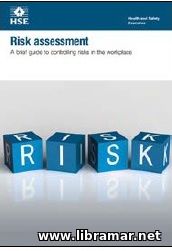 The present compact booklet is primarily aimed at the employers and managers as well as others who are assigned the responsibility for the human health and safety in the workplace. However, the content of the leaflet will also be useful to the employees and representatives of safety departments. The risks in the workplaces shall be controlled at all times as the integral part of health and safety management program of any business.
When controlling risks, the assigned people shall think and understand what could cause harm to the workers and make a decision on whether the reasonable measures have been taken to prevent the harm, and this is the risk assessment. In fact, risk assessment if required by law. It should be clearly understood that the risk assessment is not creating tons of papers - it shall rather be treated as the identification of the sensible and correct steps to provide the required control over the risks that may be presented in the workplace.
Of course, all managers and employers always take steps for protecting their employees, but properly carried risk assessment will help them decide if everything has been covered. Have a look in this small booklet to have better information about risk assessment. We also recommend you to take this course on risk assessment and watch this training video about marine risk assessment.
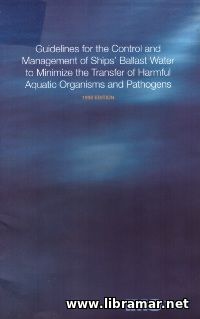 The results obtained during the studies that have been conducted in several countries show that different species of plants, bacteria and marine animals will survive in the ballast water commonly carried in the tanks of marine vessels, and they will be alive even after the marine journeys lasting several months or more.
The discharge of the shipboard ballast water or sediment upon arrival of the vessel at port may eventually result in establishing various pathogenes and aquatic organisms that are actually harmful. This, in turn, may lead to serious threats to the human, plant and animal life - and to the marine environment in general.
The potential negative effects of the discharge of shipboard ballast water have already been recognized by the IMO and WHO paying due attention to how the ballast water may contribute into spread of the epidemic bacteria. The present IMO guidelines shall not be treated as the certain solution of the above mentioned problem.
In fact each part of the document would better be viewed as a instrument which will help to improve the situation and minimize all risks commonly associated with the discharge of ballast water, of course when applied correctly...
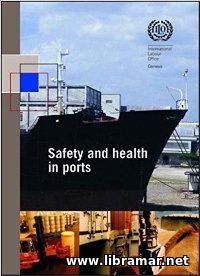 The present Code was released by the ILO with the intention to serve as a concise yet complete set of recommendations developed on the basis of the established good practice in the shipping industry. The advise provided in this volume will be useful to all persons and entities directly concerned with the health and safety in marine port works including employers and official authorities, equipment suppliers, manufacturers, workers and others.
It should be noted that some of the provisions of this document may not apply to all regions and all countries. Sometimes they will have to get adapted to the local conditions. The history of the international maritime shipping port industry dates back to the very earliest days of human civilizations. And since then the industry has developed so steadily. But the methods of handling shipboard cargo that used to be quite dangerous and arduous remained same until that time when the containers and ro-ro systems were introduced.
There have been numerous significant technical developments since that time. This volume starts with the general provisions followed by the information on the infrastructures of the ports and associated equipment, lifting appliances and their safe use, operations afloat and on shore, handing of the dangerous goods, PPE, health issues etc.
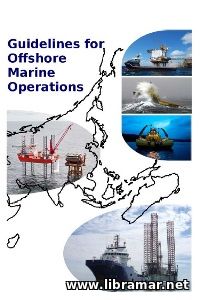 The main objective of the present manual was to provide all required guidance related to the safety of the crew members on board all ships engaged in supporting and servicing various offshore facilities; another intention of its authors was to facilitate reduction of the risks commonly associated with offshore marine operations. This would particularly be related to the operations of the vessels and offshore facilities.
The best practices that have been summarized in the pages of this publication mainly reflects ones adopted in the NWEA, i.e. North-West European Area, but may actually be applied globally. The opening section of the document is introductory and provides information about its purpose and use, structure and style, hierarchy of the authorities involves, local or regional supplements etc. The next section covers the abbreviations used throughout the document together with the terminology definitions. The third section is dealing with the responsibilities and roles of the parties, and it is followed by the section addressing operational risk management issues.
The remaining sections of the guidebooks have been devoted to the certification and training, competency and manning, operational communications and meetings, collision risk management, cargo handling operations and bulk cargo handling, MOU moving, anchor handling operations and many other important aspects of the marine offshore activities.
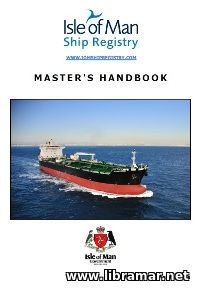 The present handbook has been designed and subsequently released by the IOM Ship Registry with the intention to be used by the Masters as well as senior officers of the vessels registered under the flag of the Isle of Man. The main purpose of the document is to provide them with the use-friendly source of information related to the IOM Merchant Shipping regulatory documentation together with the administrative processes that are normally required to properly run the vessel.
Note that the procedures contained in this book may be different from the procedures established for the vessels of other flags; the main idea of the handbook is actually to give some simple guidance on the most important areas. The opening chapters of the handbook are covering the STCW and ship manning requirements, work and rest hours, reporting accidents and provisions of the MLC 2006 convention.
Then the authors have paid due attention to the port state control activities and procedures, issuance of the shipboard certification paperwork, surveys and audits carried out on board, shipboard equipment including the newly introduced LRIT systems, refugees and stowaways, shipboard lifting gear and appliances, log and record books, and many other issues.
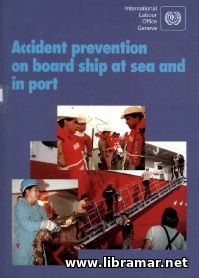 The main goal of the present Code is to provide industry with the practical guidelines of health and safety in working on board ships with a view to ensuring that the responsibility is duly understood and that it remains the top priority for all persons concerned with the maritime transportation including owners, seafarers and governments, promoting collaboration between them, ad preventing the accidents and diseases plus any other effects.
The document provides required guidance in the implementation of ILO 134 and ILO 142 together with the other applicable recommendations and conventions. The volume is covering the health and safety of the seafarers working on the seagoing vessels. Note that some parts of the document will only apply to the ships navigating in inland waters or fishing vessels. Its provisions shall be treated as the minimum requirements to be taken into consideration for protection the safety and health of the seafarers.
The volume is dealing with the general responsibilities and duties of the parties involved, accident reporting, general health and safety considerations, permit to work systems, emergencies and associated equipment, transportation of the dangerous goods, safe access and movement, enclosed space entry, materials and tools, painting, welding and other hot works conducted on board, manual lifting, and many other aspects.
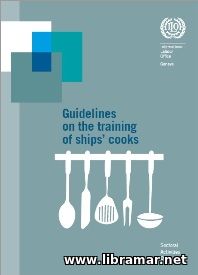 The ILO adopted the MLC 2006 at a special Maritime Session which was held in Geneva. The basic goals of the subject convention were to ensure the protection of the seafarers rights worldwide. Another declared goal was to established a field for the UN Members and owners of the ships who are committed to providing proper working/living conditions on board.
Everyone shall have a clear understanding of the importance of decent food and nutrition to the people on board. Food is deservedly considered crucial to maintaining due health and morale of the crew members who will not be able to perform their day-to-day duties in the effective manner without safe and nutritious as well a appealing food.
The present document will provide relevant guidelines adopted by a tripartite agreement of the recognized experts from the governments, seafarer organizations, owners and their advisers plus the observers from various international and governmental organizations.
The publication of the guidelines was authorized by the Governing Body. The volume is designed to provide some practical help to those drafting national guidelines. The authors hope that this document will eventually make a valuable contribution to both health and morale of the workers.
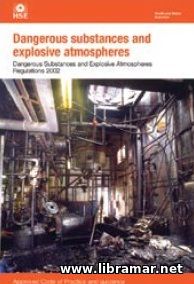 The volume belongs to the HSE Books series. The objective of the ACOP, standing for the Approved Code of Practice, and associated guidance is to provide readers with the practical recommendations and advice on what shall be done to reach compliance with the requirements of the DSEAR 2002, which is the Dangerous Substances & Explosive Atmospheres Regulations, requiring the complete elimination or significant reduction of fire and explosion risks from the substances taken in connection with the work activities.
This is a new edition of the ACOP and guidance with the streamlined and simplified text content. The material contained in the publication has been rearranged to help readers understand it easier. Note that the guidance are not mandatory and you are not formally obliged to follow them, unless specifically stated. However, following this guidance will normally let you get in compliance with relevant provisions of the law so it would be recommended to have a close look and duly familiarize yourself with the content.
Several appendices to the main section of the guidance cover other relevant legislation, fire resistance and fire reaction, transitional provisions relating to the workplace and work equipment. There is also a glossary explaining key terminology used in the document.
« 1 2 ... 9 10 11 12 13 ... 24 25 » |







